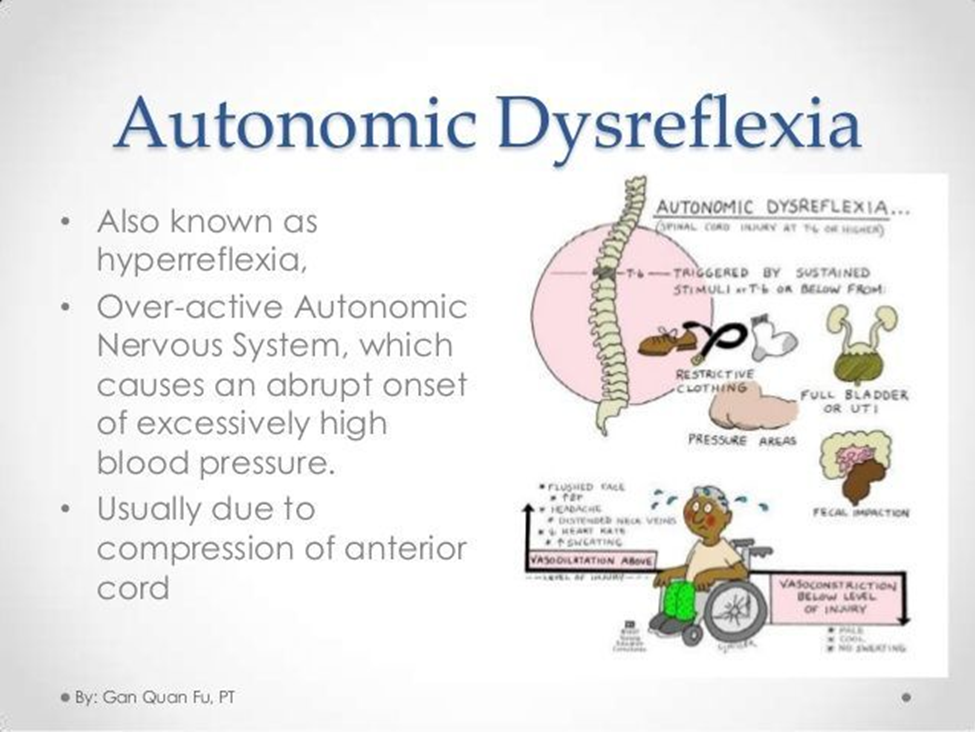Which signs and symptoms characterize expressive aphasia?
Difficulty initiating speech
Difficulty understanding the written and spoken word
Total inability to communicate
Stuttering and spitting
The Correct Answer is A
A. Difficulty initiating speech
This is a characteristic symptom of expressive aphasia. Individuals with expressive aphasia have difficulty initiating speech and may produce speech that is slow, effortful, and lacking in grammatical structure.
B. Difficulty understanding the written and spoken word
This symptom is not typically associated with expressive aphasia. Instead, difficulty understanding language, both written and spoken, is more commonly seen in receptive aphasia, also known as Wernicke's aphasia.
C. Total inability to communicate
While expressive aphasia can severely impair verbal communication, it does not result in a total inability to communicate. Individuals with expressive aphasia may still be able to communicate to some extent using nonverbal means, gestures, or writing.
D. Stuttering and spitting
Stuttering and spitting are not characteristic symptoms of expressive aphasia. Stuttering is a speech disorder characterized by interruptions in the flow of speech, while spitting is not typically associated with aphasia.
Nursing Test Bank
Naxlex Comprehensive Predictor Exams
Related Questions
Correct Answer is C
Explanation
A. Check the client for a fecal impaction.
This intervention is important for managing autonomic dysreflexia because a fecal impaction can trigger autonomic dysreflexia by causing rectal distention. However, it is not the first action the nurse should take. Promptly addressing the immediate cause of autonomic dysreflexia is crucial to prevent complications.
B. Ensure the room temperature is warm.
This intervention is important for maintaining the client's comfort and preventing temperature-related complications. However, it is not the first action the nurse should take when suspecting autonomic dysreflexia. Immediate interventions to address the underlying cause of autonomic dysreflexia are necessary to prevent serious complications such as stroke or seizure.
C. Check the client's bladder for distention.
This is the correct action to take first. Bladder distention is one of the most common triggers of autonomic dysreflexia in individuals with spinal cord injuries. A distended bladder stimulates autonomic reflexes, leading to a sudden increase in blood pressure. Therefore, the nurse should assess the client's bladder for distention and initiate appropriate interventions such as catheterization to relieve urinary retention.
D. Raise the head of the bed.
While elevating the head of the bed can help reduce blood pressure in some situations, it is not the first action the nurse should take when suspecting autonomic dysreflexia. Elevating the head of the bed may exacerbate autonomic dysreflexia by increasing venous return and blood pressure. Therefore, addressing the underlying cause of autonomic dysreflexia, such as bladder distention, takes priority.

Correct Answer is C
Explanation
A. Hyperglycemia:
Hyperglycemia refers to high blood sugar levels. While certain medications can affect glucose metabolism and potentially lead to hyperglycemia as a side effect, this is not typically associated with hydantoin therapy for seizure disorder. Therefore, it is less likely for the patient to experience hyperglycemia as a direct result of taking hydantoin medication.
B. Hunger:
Hunger is not a common side effect of hydantoin therapy for seizure disorder. While some medications may affect appetite or cause changes in eating habits, hunger is not a typical side effect of hydantoin medications such as phenytoin.
C. Hypoglycemia:
Hypoglycemia refers to low blood sugar levels, which can lead to symptoms such as confusion, dizziness, sweating, and weakness. Hydantoin medications, particularly phenytoin, can affect glucose metabolism and increase the risk of hypoglycemia, especially in patients who already have diabetes or are prone to low blood sugar. Therefore, it is important for patients taking hydantoin therapy to monitor their blood sugar levels regularly and be aware of the signs and symptoms of hypoglycemia.
D. Pupil dilation:
Pupil dilation, or mydriasis, is not a common side effect of hydantoin therapy for seizure disorder. While certain medications may affect pupil size, this is not typically associated with hydantoin medications such as phenytoin.
Whether you are a student looking to ace your exams or a practicing nurse seeking to enhance your expertise , our nursing education contents will empower you with the confidence and competence to make a difference in the lives of patients and become a respected leader in the healthcare field.
Visit Naxlex, invest in your future and unlock endless possibilities with our unparalleled nursing education contents today
Report Wrong Answer on the Current Question
Do you disagree with the answer? If yes, what is your expected answer? Explain.
Kindly be descriptive with the issue you are facing.
